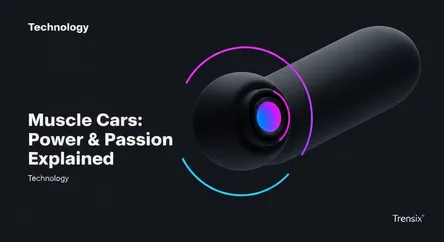Technology
Muscle Cars: Power & Passion Explained

What defines a muscle car? Explore these high-performance American icons, why they're trending, and their impact on drivers and auto culture.
What is it?
A muscle car is a high-performance American automobile, typically characterized by a large, powerful V8 engine fitted into a mid-size, two-door, rear-wheel-drive chassis. Born in the 1960s, icons like the Ford Mustang, Chevrolet Camaro, and Dodge Challenger defined the segment. The core philosophy was simple: offer breathtaking straight-line acceleration and an aggressive aesthetic at an affordable price. While classic models are prized by collectors, modern iterations continue this legacy, combining retro styling with advanced engineering, safety features, and superior handling capabilities.
Why is it trending?
Muscle cars are experiencing a resurgence fueled by a blend of nostalgia and innovation. Pop culture continues to celebrate their iconic status, while automakers revive classic nameplates with cutting-edge technology. The trend is also driven by the "last chance" sentiment for traditional V8s as the industry pivots to electrification. This has created a new frontier with electric muscle cars, like the Dodge Charger Daytona SRT. These vehicles promise the instant torque of EVs while attempting to preserve the muscle car's soul, attracting both old-school fans and a new generation of drivers.
How does it affect people?
For enthusiasts, muscle cars represent more than transportation; they are a passion and a cultural touchstone, fostering community through car shows and clubs. The visceral experience—the roar of the engine and the raw power—creates a unique emotional connection. For the average consumer, this trend influences the broader market by pushing manufacturers to offer more exciting vehicle options. It proves there is strong demand for cars that prioritize driver engagement, ensuring that even as technology evolves, the thrill of driving remains a key part of the automotive landscape.